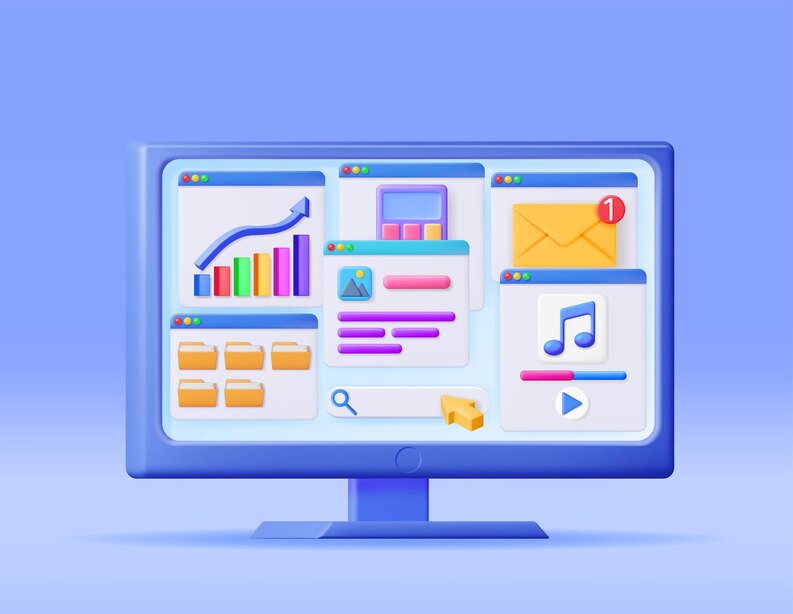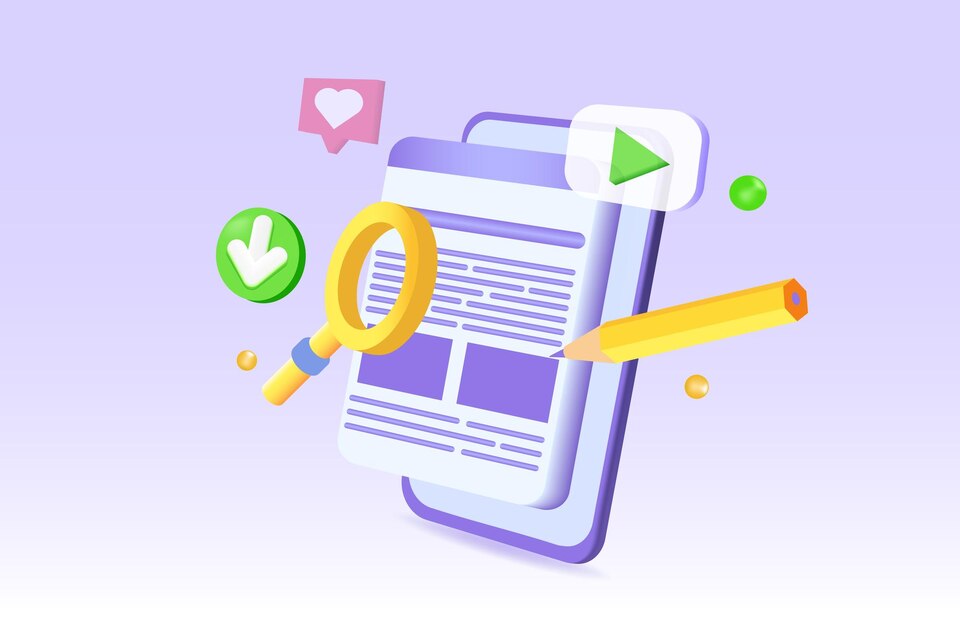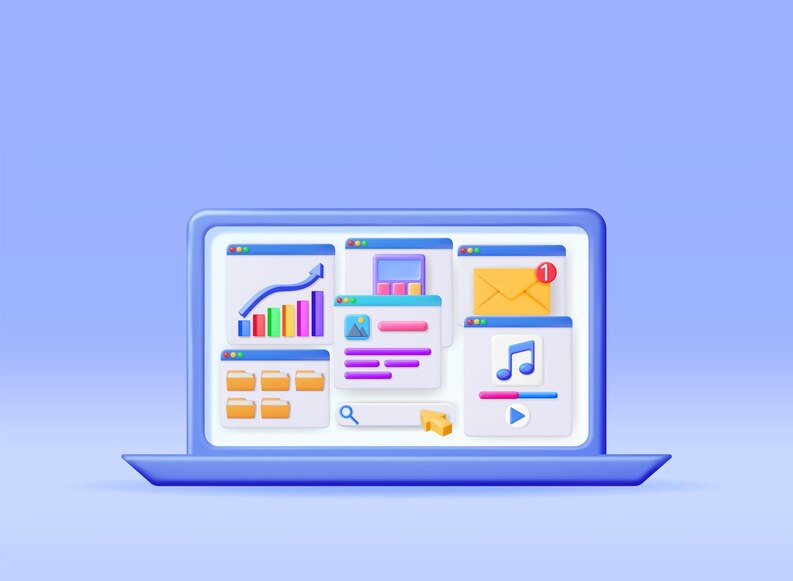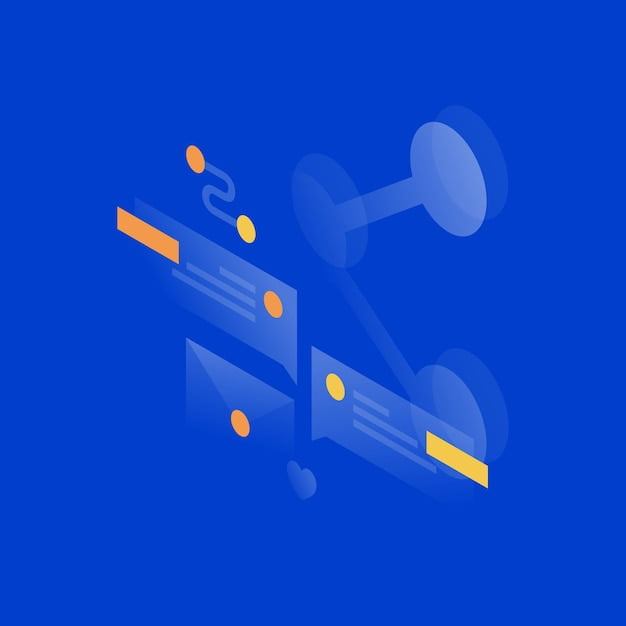When it comes to maximizing your website’s visibility and attracting organic traffic, optimizing individual web pages is key. By implementing on-page SEO techniques and best practices, you can improve your web page ranking and enhance its overall performance in search results. In this article, we will delve into the world of webpage optimization, exploring various strategies to help you optimize your webpage content and boost its search engine rankings.
Table of Contents
Understanding the basics of on-page SEO
To optimize individual web pages effectively, it’s crucial to understand the basics of on-page SEO. On-page SEO refers to the process of optimizing individual web pages to improve their search engine rankings and attract organic traffic. By implementing various on-page SEO techniques, you can enhance your webpage’s visibility and relevance to search engines.
The Key Elements of On-Page Optimization
When it comes to on-page SEO, several key elements play a significant role in improving web page rankings. These elements include:
- Title Tags: The title tag is an HTML element that specifies the title of a webpage. It plays a vital role in conveying the topic and relevance of the page to search engines.
- Meta Descriptions: Meta descriptions provide a brief summary of the content on a webpage. They should be compelling and concise, capturing the attention of search engine users and encouraging them to click on the link.
- Header Tags: Header tags, such as H1, H2, and H3, are used to structure the content on a webpage. They help search engines understand the hierarchy and importance of the information.
- URL Structure: Optimizing the URL structure of your web pages can make them more readable and user-friendly. It’s important to include relevant keywords in the URL to improve search engine visibility.
- Keyword Optimization: Keyword optimization involves strategically incorporating relevant keywords into your webpage’s content. This helps search engines understand the topic and relevance of your page.
- Image Optimization: Images on your webpage should be optimized with descriptive file names, alt tags, and appropriate file sizes to improve website performance and search engine visibility.
- Internal Linking: Internal links help search engines navigate and understand the structure of your website. They also improve user experience by providing additional relevant content.
By paying attention to these key elements of on-page optimization, you can improve your web page’s performance in search engine rankings and attract more organic traffic.
The Importance of On-Page SEO Techniques
Implementing on-page SEO techniques is essential for several reasons:
- Improved Search Engine Rankings: On-page SEO techniques help search engines understand the content and relevance of your web pages. By optimizing your pages according to search engine guidelines, you increase the chances of ranking higher in search engine results pages (SERPs).
- Increased Organic Traffic: When your web pages rank higher in search engine results, they receive more organic traffic from users actively searching for relevant information. This can lead to greater visibility, brand exposure, and potential conversions.
- Enhanced User Experience: On-page SEO techniques, such as optimizing page speed, improving website structure, and creating quality content, contribute to a better user experience. This can result in higher engagement, longer page visits, and lower bounce rates.
- Long-Term Results: Unlike paid advertising, on-page SEO techniques can provide long-term benefits. Once optimized, your web pages can continue to rank well in search engines and attract organic traffic without ongoing financial investments.
Understanding the basics of on-page SEO is crucial for optimizing individual web pages and improving their search engine rankings. By implementing effective on-page SEO techniques, you can enhance your webpage’s visibility, attract organic traffic, and achieve long-term success in search engine optimization.
Conducting keyword research for web page optimization

Keyword research is a crucial step in optimizing individual web pages for better search engine rankings. By understanding the search terms and phrases that your target audience is using, you can tailor your content to meet their needs and improve your visibility in search results. In this section, we will guide you through the process of conducting keyword research and finding the right keywords to target for your webpage optimization efforts.
1. Identify Your Target Audience
The first step in conducting keyword research is to clearly define your target audience. Consider who your ideal website visitors are and what they are searching for online. Understanding your audience’s needs and interests will help you identify relevant keywords that align with their search intent.
2. Brainstorm Relevant Keywords
Once you have a clear understanding of your target audience, start brainstorming relevant keywords that are related to your web page content. Think about the topics and themes that are relevant to your industry or niche, and jot down any keywords or phrases that come to mind.
Tip: Use online tools such as Google Keyword Planner, SEMrush, or Moz Keyword Explorer to generate keyword ideas based on your initial brainstorming.
3. Analyze Keyword Search Volume and Competition
After creating a list of potential keywords, it’s important to analyze their search volume and competition. Look for keywords that have a decent search volume (indicating that people are searching for those terms) but are not highly competitive (meaning that they are not overly difficult to rank for).
| Keyword | Search Volume | Competition |
|---|---|---|
| Optimizing individual web pages | 3,000 | Low |
| Webpage optimization best practices | 2,500 | Medium |
| SEO keyword research techniques | 1,800 | High |
Table: Keyword Analysis
4. Consider Long-Tail Keywords
In addition to targeting broad keywords, consider incorporating long-tail keywords into your content. Long-tail keywords are more specific and typically have lower search volume but higher conversion rates. They can help you attract highly targeted visitors who are more likely to engage with your content and take action.
5. Select Target Keywords
Based on your keyword analysis, select the most appropriate and relevant keywords to target for each web page. Consider the search volume, competition, and relevance to your content when making your selection.
6. Integrate Keywords into Your Web Page
Once you have identified your target keywords, it’s time to strategically integrate them into your web page. Include the selected keywords in your page title, headings, meta description, URL, and throughout the content. However, ensure that the keyword usage remains natural and doesn’t compromise the user experience.
By conducting thorough keyword research and strategically optimizing your web pages, you can improve your search engine rankings and attract more organic traffic to your website.
Crafting compelling meta titles and descriptions

When it comes to webpage optimization, meta titles, and descriptions are crucial elements that can significantly impact your search engine rankings. Crafting compelling meta titles and descriptions not only helps search engines understand the content on your web pages but also entices users to click through to your site. Here, we will explore how to create persuasive meta titles and descriptions that effectively communicate your webpage’s content and attract the attention of search engine users.
Meta Titles: The First Impression
A well-crafted meta title serves as the first impression of your webpage in search engine results pages. It should be concise, compelling, and accurately reflect the content on your page, incorporating relevant keywords. By utilizing meta titles effectively, you can improve your webpage’s visibility and encourage users to click through to your site.
Meta Descriptions: Engaging and Informative
Meta descriptions provide a summary of your web page’s content and act as an opportunity to entice users to visit your site. A well-written meta description should be engaging, informative, and include relevant keywords. By crafting compelling meta descriptions, you can increase the click-through rates of your web pages and drive more organic traffic to your site.
| Best Practices for Crafting Meta Titles and Descriptions |
|---|
| 1. Use relevant keywords: Include relevant keywords in your meta titles and descriptions to improve search engine visibility. |
| 2. Be concise: Keep your meta titles under 60 characters and meta descriptions under 160 characters to ensure they are fully displayed in search results. |
| 3. Be descriptive: Clearly communicate what users can expect from your webpage to attract the right audience. |
| 4. Create unique titles and descriptions: Each web page should have its own unique meta title and description to avoid duplication. |
| 5. Include a call-to-action (CTA): Use actionable language in your meta descriptions to encourage users to click through and visit your site. |
| 6. Regularly review and update: Continuously monitor and refine your meta titles and descriptions to optimize performance and stay up-to-date with changing search trends. |
By following these best practices, you can optimize your meta titles and descriptions for maximum search engine visibility and improve the click-through rates of your web pages. Craft compelling meta titles and descriptions that accurately represent your webpage’s content, engage users and drive organic traffic to your site.
Optimizing URL structure and page headings

When it comes to optimizing individual web pages for better search engine rankings, the URL structure and page headings play a crucial role. By following best practices in URL structure and crafting well-structured headings, you can improve the visibility and relevance of your web pages in search results. Let’s delve into some key strategies for optimizing URL structure and page headings.
Optimizing URL Structure
URL structure refers to the format and organization of the web page’s address. An optimized URL structure can make it easier for search engines to understand the content of your web page and improve its ranking. Here are some tips to optimize your URL structure:
- Use descriptive keywords: Incorporate relevant keywords in your URL to give search engines and users a clear idea of your page’s content.
- Avoid unnecessary words and characters: Keep your URLs concise and remove any unnecessary words or characters, such as dates or random alphanumeric strings.
- Use hyphens to separate words: Instead of using underscores or spaces, use hyphens to separate words in your URL. This helps search engines correctly interpret the words in your URL.
- Avoid using stop words: Stop words like “a,” “and,” or “the” provide little value in URLs. Eliminate them to keep your URLs focused on relevant keywords.
Crafting Well-Structured Page Headings
Page headings, such as H1, H2, and H3 tags, provide a hierarchical structure to your content and help search engines understand the context and relevance of different sections. Here’s how you can optimize your page headings:
- Use the main keyword in your H1 heading: The H1 heading should include the main keyword you want to rank for. This helps search engines identify the primary topic of your page.
- Organize content with H2 and H3 headings: Use H2 and H3 tags to structure your content and break it into logical sections. Include relevant keywords in these headings to further optimize your page’s content.
- Avoid excessive use of headings: While headings are important for organizational purposes, using too many can confuse search engines and dilute the focus of your content. Use headings sparingly and strategically.
| Optimization Strategy | URL Structure | Page Headings |
|---|---|---|
| Use descriptive keywords | ✓ | |
| Avoid unnecessary words and characters | ✓ | |
| Use hyphens to separate words | ✓ | |
| Avoid using stop words | ✓ | |
| Use the main keyword in H1 heading | ✓ | |
| Organize content with H2 and H3 headings | ✓ | |
| Avoid excessive use of headings | ✓ |
Optimizing the URL structure and page headings of your web pages is an integral part of on-page SEO. By following these best practices, you can enhance your webpage’s visibility, relevance, and search engine rankings.
Optimizing Individual Web Pages with relevant keywords
To optimize individual web pages and boost their visibility and search engine rankings, it is essential to create high-quality and keyword-rich content. By integrating relevant keywords strategically, you can improve your web page’s optimization and attract organic traffic. In this section, we will explore effective techniques for enhancing your webpage content with relevant keywords.
1. Conduct Thorough Keyword Research
Before incorporating keywords into your webpage content, conduct comprehensive keyword research to identify relevant terms and phrases that align with your target audience’s search intent. Utilize keyword research tools to identify popular search terms and assess their competitiveness.
2. Understand User Intent
When optimizing your webpage content with keywords, it is crucial to consider user intent. Understand the purpose behind users’ search queries and create content that fulfills their needs. By aligning your content with user intent, you can enhance relevancy and increase the chances of ranking higher in search engine results.
3. Incorporate Keywords Naturally
While it’s important to include keywords in your content, avoid keyword stuffing. Instead, prioritize a natural and seamless integration of keywords into your webpage content. Place keywords strategically in page titles, headings, subheadings, and throughout the body text while maintaining a coherent and engaging flow.
4. Write Compelling and Informative Content
To optimize your webpage content effectively, focus on writing compelling, informative, and valuable content that resonates with your target audience. Craft engaging paragraphs and use persuasive language to capture readers’ attention and encourage them to stay on your webpage longer.
5. Utilize Header Tags (H3) for Structured Content
Organize your webpage content using header tags (H3) to create a logical structure that aids readers’ comprehension and improves search engine optimization. Use H3 tags to introduce subtopics and sections within your content, allowing search engines to understand the hierarchy and relevance of your information.
6. Optimize Images with Alt Tags
Images play a vital role in webpage content. Optimize your images by adding descriptive alt tags that include relevant keywords. Alt tags not only improve accessibility for visually impaired users but also provide search engines with additional context about your webpage’s content.
7. Encourage User Engagement
Engaging users on your webpage is crucial for optimization. Encourage user engagement through calls-to-action, interactive elements, and relevant internal links. By providing a user-friendly experience, you can increase the time users spend on your webpage, thereby enhancing its search engine ranking potential.
By implementing these strategies, you can enhance your webpage content with relevant keywords, improve its visibility, and achieve higher search engine rankings.
Optimizing images and multimedia elements
Images and multimedia elements play a crucial role in enhancing both user experience and search engine optimization (SEO) for your web pages. Optimizing these elements can greatly improve your web page ranking and visibility in search results. In this section, we will provide insights and strategies to optimize images and multimedia elements on your website for maximum impact.
1. Image Optimization
When it comes to image optimization, there are several key factors to consider. By following these best practices, you can ensure that your images are not only visually appealing but also contribute positively to your web page’s SEO:
- Use descriptive and relevant file names for your images. Incorporate keywords where appropriate to help search engines understand the content of the image.
- Compress your images to reduce file size without compromising quality. Smaller file sizes improve page load times, which is a crucial ranking factor.
- Add alt text to describe your images. Alt text provides context for visually impaired users and helps search engines understand the content of the image.
- Utilize responsive image techniques to ensure your images adapt and display properly on different devices and screen sizes.
2. Optimizing multimedia elements
In addition to images, multimedia elements such as videos, audio files, and interactive content can significantly enhance user engagement on your website. Follow these strategies to optimize multimedia elements for SEO:
- Ensure your multimedia elements are relevant and add value to your content. They should enhance the overall user experience and align with your web page’s topic.
- Provide transcripts or captions for videos and audio files. This improves accessibility and allows search engines to understand the content of the multimedia element.
- Optimize the metadata associated with your multimedia elements. Use descriptive titles, tags, and descriptions that include relevant keywords to improve search engine visibility.
- Consider page load times when incorporating multimedia elements. Optimize file sizes and formats to ensure fast loading without sacrificing quality.
By optimizing your images and multimedia elements, you can enhance your web page’s user experience and improve its ranking in search engine results. The tips and strategies provided in this section will help you make the most out of these visual and interactive elements.
Implementing on-page technical optimizations
When it comes to improving the performance of your individual web pages, on-page technical optimizations play a critical role. By implementing these optimizations, you can enhance your webpage’s visibility in search results and improve its overall search engine optimization (SEO). In this section, we will cover key technical aspects that you should focus on to optimize your web pages for maximum impact.
1. Page Speed
Page speed is a crucial factor in determining user experience and search engine rankings. Slow-loading web pages can lead to higher bounce rates and lower organic traffic. To optimize your page speed:
- Minimize server response time by choosing a reliable hosting provider.
- Compress images and multimedia elements to reduce file sizes without compromising quality.
- Enable browser caching to store frequently used files on your visitors’ devices.
2. Mobile-Friendliness
In today’s mobile-centric world, having a mobile-friendly website is essential for SEO success. To optimize your web pages for mobile:
- Ensure your website is fully responsive and adapts to different screen sizes.
- Optimize font sizes and spacing for easy readability on mobile devices.
- Use a mobile-friendly navigation menu that is easy to navigate with a touch interface.
3. Structured Data
Structured data provides search engines with additional information about your web pages, improving their understanding and visibility in search results. To implement structured data:
- Use schema markup to annotate important elements such as articles, products, events, and more.
- Include relevant structured data in your meta tags, headers, and content.
- Test your structured data using Google’s Structured Data Testing Tool to ensure proper implementation.
By focusing on these on-page technical optimizations, you can enhance the performance of your individual web pages and boost their search engine rankings. Remember to regularly monitor and analyze the impact of these optimizations to ensure continued success.
Leveraging internal linking for web page SEO
When it comes to webpage optimization and implementing effective web page SEO techniques, internal linking is a strategy that is often overlooked but holds significant potential. By strategically implementing internal links within your website, you can enhance the SEO performance of individual web pages and improve the overall user experience.
Internal linking refers to the practice of linking one page of your website to another page within the same domain. These links help search engine crawlers navigate your website, establish website hierarchy, and understand the context and relevance of each page. Furthermore, internal links provide clear navigation paths for users, enabling them to easily explore related content within your website.
So how exactly can you leverage internal linking for web page SEO? Here are a few tips:
- Strategically place internal links: Identify key pages or articles within your website that have high SEO value or are widely read by your audience. From these high-value pages, strategically link to relevant pages within your website. This helps distribute the SEO authority and improves the visibility of these linked pages in search engine rankings.
- Use descriptive anchor text: Rather than using generic terms like “click here” or “learn more,” use descriptive anchor text that accurately describes the content of the linked page. Using relevant keywords in your anchor text helps search engines understand the context of the linked page and improves its chances of ranking for those keywords.
- Create a hierarchical structure: Organize your website’s content into a logical hierarchy, with important pages higher up in the structure. This allows search engines to understand the importance and relevance of each page within your website. Create a comprehensive internal linking structure that supports this hierarchy, making it easier for search engines to crawl and index your web pages.
By implementing these internal linking strategies, you can optimize individual web pages for better search engine rankings and enhance the overall user experience on your website. Internal linking not only helps drive organic traffic to your web pages but also enables users to discover related content, increasing their engagement and time spent on your website.
Measuring and analyzing webpage performance
Measuring and analyzing the performance of your web pages is an essential aspect of effective website optimization. By assessing various metrics and utilizing reliable tools, you can gain valuable insights into the performance of your optimized individual web pages. This allows you to make data-driven decisions and implement further improvements that align with SEO best practices.
Tracking Tools and Metrics
When it comes to measuring webpage performance, there are several tools and metrics to consider. These tools provide valuable data that can help you evaluate the effectiveness of your optimization efforts. Some popular performance tracking tools and metrics include:
- Google Analytics: This powerful tool offers in-depth analytics and reports on various aspects of your website’s performance, including page views, bounce rate, average time on page, and more.
- Google Search Console: With this tool, you can monitor how your web pages are performing in search results, identify potential errors or issues, and track keyword rankings.
- Page Speed Insights: This tool measures the loading speed and performance of your web pages, providing recommendations for improvement to enhance the user experience.
By leveraging these tools and analyzing relevant metrics, you can gain valuable insights into the strengths and weaknesses of your web pages and identify areas for optimization.
| Metric | Description |
|---|---|
| Page Load Time | The time it takes for your web page to fully load for a user. |
| Bounce Rate | The percentage of users who leave your website after viewing only one page. |
| Conversion Rate | The percentage of users who complete a desired action on your web page, such as making a purchase or submitting a form. |
| Time on Page | The average amount of time users spend on your web page before navigating away. |
Interpreting Performance Data
Once you have collected the performance data using various tracking tools and metrics, it’s important to interpret the results effectively. This involves analyzing the data, drawing meaningful insights, and identifying areas for improvement. Here are some key considerations when interpreting your webpage performance data:
- Identify high-performing web pages: Look for the pages that receive the most traffic, have low bounce rates, and have high conversion rates.
- Spot underperforming web pages: Identify pages with high bounce rates or low conversion rates, which may require optimization to enhance their performance.
- Consider user behavior: Analyze metrics like time on page to understand how users engage with your content and identify opportunities for improvement.
- Compare performance over time: Track changes in performance metrics to identify trends and assess the impact of optimization efforts.
By effectively interpreting performance data, you can gain valuable insights into the effectiveness of your optimization efforts and make informed decisions to enhance the performance of your web pages.
Conclusion
In this article, we have uncovered the secrets to optimizing individual web pages for maximum search visibility and improved rankings. By implementing the discussed on-page SEO techniques and best practices, you can enhance your webpage’s performance and attract more organic traffic.
Start by conducting thorough keyword research to identify the most relevant keywords for your webpage. Craft compelling meta titles and descriptions to entice search engine users and improve your click-through rates. Optimize your URL structure and page headings to align with your target keywords and facilitate better search engine rankings.
Additionally, focus on enhancing your webpage content with relevant keywords and optimizing images and multimedia elements. Implement on-page technical optimizations, such as improving page speed and ensuring mobile-friendliness, to provide a seamless user experience and boost your webpage’s visibility in search results.
Lastly, leverage the power of internal linking to strengthen the authority and relevance of your web pages, and regularly measure and analyze the performance of your optimized individual web pages using appropriate tools and metrics. By following these strategies, you can take control of your web page’s SEO and enjoy the rewards of improved search engine rankings.




